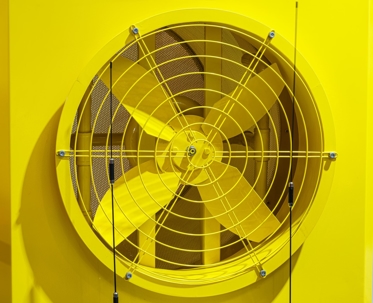Air conditioning is such a basic staple of our lives, that many probably can’t imagine the world before A/C. The invention and eventual widespread implementation of temperature regulation technology began all the way back in the 1800s.
Timeline of Air Conditioning
A physician in Florida gets most of the credit for kickstarting the movement towards air conditioning. Dr. John Gorrie believed that his hospital patients would get better faster if they were more comfortable and that cooler temperatures would make it easier to avoid ailments such as malaria. His first solution was to ship ice from frozen lakes and streams.
This obviously didn’t work for many reasons, and Gorrie began to experiment with artificial cooling. Though he was granted a patent for a design in 1851, it never hit the market. It did, however, become the foundation for modern air conditioning and refrigeration.
There wasn’t much happening in the world of A/C until the early 1900s when Willis Carrier was contracted to solve a humidity issue at a publishing company in Brooklyn. The first system created by Carrier pulled cool water from a well and was supplemented by an ammonia compressor which helped to maintain the humidity at 55% year-round and had the “cooling effect of melting 108,000 pounds of ice per day.” The modern-day air conditioner had arrived.
From here, there were improvements on old technologies every few years.
In 1904, the St. Louis World’s Fair used mechanical refrigeration to cool the Missouri State Building. This was the first time many members of the public had experienced A/C.
By the 1920s, movie theatres pulled large summer crowds by advertising their cooler indoor temperatures.
In May 1922, Carrier had been contracted to work on a multi-level cooling system that utilized a centrifugal chiller. This allowed both the upper and lower levels of the Rivoli Theater to stay comfortable temperatures.
By 1947, homeowners were able to take the comfort of A/C home with them in the form of a compact, inexpensive window unit created by engineer Henry Galson.
According to the Energy Information Administration, today you can find air conditioning in approximately 87% of all households in the United States.
The Latest Technologies in Air Conditioning
Home comfort technology has come a long way since the 1800s, but there are still advancements being made to this day. Devices such as smart thermostats allow homeowners to program and control the temperature in their homes whether they’re in the house or not, and modern air conditioning systems use less energy than ever before. The U.S. Department of Energy is working on many projects to help consumers stay cool and reduce their energy usage.
In Tennessee, the Oak Ridge National Laboratory paired with Georgia Tech and IntelliChoice Energy to develop an energy storage system that will help to reduce wasted heat from traditional systems. Once completed, this project hopes to improve HVAC performance by 35% and energy storage efficiency by 70%.
In Florida, Dias analytics paired with Oak Ridge National Laboratory to develop a new membrane-based rooftop air conditioner. The goal of this project is to reduce electrical consumption by 30-50% by using water as a refrigerant instead of chemicals.
The University of Florida is progressing on its prototype hybrid water heater, dehumidifier, and cooler, with the goal of more efficiency during the heat transfer. This project aims to increase residential comfort while reducing energy costs.
In Maryland, Optimized Thermal Systems is working on an advanced heat exchanger with 90% fewer joints than a 2-ton residential A/C system. The elimination of these joints would reduce the chances of refrigerant leakage and keep your home cooler, longer.
In Connecticut, the United Technologies Research Center is developing a heat pump that would cool your home without the use of chemical refrigerants. According to the project brief, if fully commercialized, this prototype could reduce greenhouse gas emissions by 60 million metric tons.

